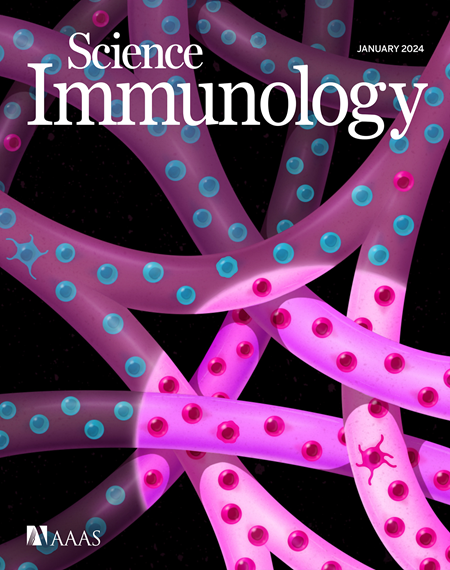An Il12 mRNA-LNP adjuvant enhances mRNA vaccine–induced CD8 T cell responses
IF 17.6
1区 医学
Q1 IMMUNOLOGY
引用次数: 0
Abstract
Optimizing vaccine design to induce CD8 T cell responses has been challenging, but lipid nanoparticle (LNP)–encapsulated mRNA vaccines effectively generate CD8 T cell memory. Interleukin-12 (IL-12) supports CD8 T cell expansion and acquisition of effector function, but the role of IL-12 in the generation of CD8 T responses to mRNA vaccination is unclear. Here, we determine that endogenous IL-12 is not required for CD8 T cell responses to mRNA-LNP vaccination. We assessed the adjuvant activity of an mRNA-LNP encapsulating a codon-optimized mRNA that encodes both subunits of IL-12 (LNP–IL-12). Coadministration of LNP–IL-12 with ovalbumin (OVA) mRNA-LNPs enhanced CD8 T cell expansion and effector function and expanded circulating, effector, and tissue-resident memory CD8 T cells. LNP–IL-12 increased CD8 T cell responses against SARS-CoV-2 and influenza virus antigens and improved protection against Listeria monocytogenes–OVA and B16F0-OVA melanoma. Thus, modification of mRNA-LNP formulations to include a cytokine mRNA provides a strategy to enhance CD8 T cell–mediated protection.
Il12 mRNA- lnp佐剂增强mRNA疫苗诱导的CD8 T细胞应答
优化疫苗设计以诱导CD8 T细胞反应一直具有挑战性,但脂质纳米颗粒(LNP)封装的mRNA疫苗有效地产生CD8 T细胞记忆。白细胞介素-12 (IL-12)支持CD8 T细胞扩增和获得效应功能,但IL-12在mRNA疫苗接种产生CD8 T应答中的作用尚不清楚。在这里,我们确定内源性IL-12不是CD8 T细胞对mRNA-LNP疫苗应答所必需的。我们评估了包裹编码IL-12亚基的密码子优化mRNA (LNP-IL-12)的mRNA- lnp的佐剂活性。LNP-IL-12与卵清蛋白(OVA) mRNA-LNPs共给药可增强CD8 T细胞的扩增和效应功能,并可扩增循环、效应和组织驻留记忆CD8 T细胞。LNP-IL-12增强了CD8 T细胞对SARS-CoV-2和流感病毒抗原的应答,增强了对单核细胞增生李斯特菌- ova和B16F0-OVA黑色素瘤的保护作用。因此,修改mRNA- lnp配方以包含细胞因子mRNA提供了一种增强CD8 T细胞介导的保护的策略。
本文章由计算机程序翻译,如有差异,请以英文原文为准。
求助全文
约1分钟内获得全文
求助全文
来源期刊

Science Immunology
Immunology and Microbiology-Immunology
CiteScore
32.90
自引率
2.00%
发文量
183
期刊介绍:
Science Immunology is a peer-reviewed journal that publishes original research articles in the field of immunology. The journal encourages the submission of research findings from all areas of immunology, including studies on innate and adaptive immunity, immune cell development and differentiation, immunogenomics, systems immunology, structural immunology, antigen presentation, immunometabolism, and mucosal immunology. Additionally, the journal covers research on immune contributions to health and disease, such as host defense, inflammation, cancer immunology, autoimmunity, allergy, transplantation, and immunodeficiency. Science Immunology maintains the same high-quality standard as other journals in the Science family and aims to facilitate understanding of the immune system by showcasing innovative advances in immunology research from all organisms and model systems, including humans.
 求助内容:
求助内容: 应助结果提醒方式:
应助结果提醒方式:


